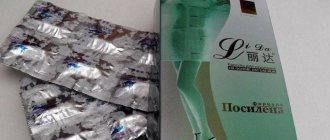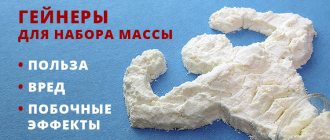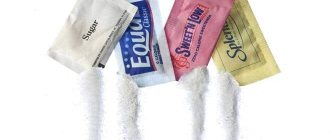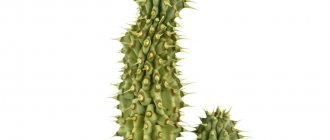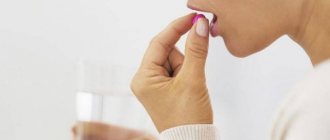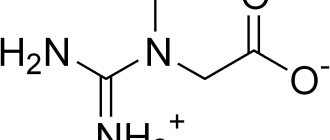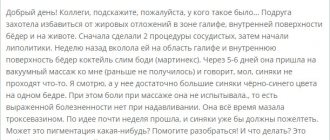results
- The study included 221 patients who received a total of 276 courses of rituximab therapy.
- Indications for rituximab were connective tissue diseases (38%), systemic vasculitis (36%) and autoimmune cytopenia (22%).
- The incidence of serious infectious adverse events at year 1 was 17.3 (95% confidence interval (CI) 12.0-22.5) per 100 person-years and at year 2 11.3 (95% CI 8.1-14). ,5) per 100 person-years.
- During the observation period, 47 serious infectious adverse events occurred, including pneumonia (45%) and bacteremia (21%).
- The most common causative agents of infection were bacteria (55%) and fungi (12%).
- Risk factors for infectious adverse events included age, history of diabetes, cancer, concomitant steroid therapy, and low CD4 lymphocyte count before initiation of rituximab therapy.
- Immunoglobulin replacement therapy was initiated in 22 courses of rituximab (8%).
Treatment of thyrotoxicosis
Thyrotoxicosis is caused by excessive secretion of thyroid hormones by the thyroid gland and occurs in many clinical conditions. The causes of the development of thyrotoxicosis can be: diffuse toxic goiter (DTZ, Graves' disease, Basedow's disease); autoimmune thyroiditis in the phase of thyrotoxicosis; functional autonomy (toxic adenoma, multinodular toxic goiter); iodine-induced thyrotoxicosis; resistance to thyroid hormones; TSH-producing adenoma; gestational transient thyrotoxicosis; cancer metastases producing thyroid hormones; Struma ovarii; iatrogenic thyrotoxicosis; thyrotoxic stage of subacute thyroiditis (de Quervain).
If a patient has clinical symptoms of thyrotoxicosis, before starting treatment, it is very important to accurately determine the cause of its development, since the adequacy of the chosen method of therapy will depend on this.
Hormonal markers of hyperfunction, as well as other thyroid diseases, are thyroid-stimulating hormone (TSH) and free thyroxine (free T4). In cases where the study of TSH turns out to be reduced, and St. T4 is within normal limits, free triiodothyronine (free T3) is determined to diagnose T3 thyrotoxicosis (Fig. 1). At the next stage of diagnosis, it is necessary to establish the cause of thyrotoxicosis. In medical practice, we most often see patients with autoimmune diseases of the thyroid gland - thyroid disease and autoimmune thyroiditis. DTG is caused by the production of thyroid-stimulating immunoglobulins (TSI), which bind to the TSH receptor on the membranes of thyrocytes and, through the activation of cyclic adenosine monophosphate, constantly stimulate increased secretion of thyroid hormones. The study of antibodies to the TSH receptor (AT-rTSH) not only allows you to confirm the diagnosis of DTG, but also differentiate it from autoimmune thyroiditis (AIT).
Indications for determining AT-rTSH in clinical practice
- Thyrotoxicosis during pregnancy.
- Subclinical thyrotoxicosis in combination with diffuse goiter.
- Multinodular toxic goiter with “hot” nodes.
- Differential diagnosis of Graves' disease and various variants of destructive thyrotoxicosis.
- Differential diagnosis of neonatal thyrotoxicosis.
- Prognosis of relapse of Graves' disease after a course of thyreostatic therapy.
In the practice of a doctor, it has already become traditional to determine antibodies to thyroglobulin (AT-TG) and to thyroid peroxidase (AT-TPO). Identification of these antibodies makes it possible to easily solve the problem of diagnosis either in favor of AIT or DTZ. Particular attention should be paid to this fact, since AT-TG and AT-TPO can be detected in fairly large quantities both in patients with AIT and in patients with DTG. Moreover, according to research, these antibodies can be detected in some healthy people and in patients with thyroid diseases of non-autoimmune origin. And finally, antibodies can not be detected in all cases of AIT and DTD. Consequently, it is not possible to carry out a diagnosis based on only one sign, much less decide on the advisability of prescribing treatment. In the diagnosis of AIT, in addition to determining AT-TPO, ultrasound examination of the thyroid gland (US) is of great importance.
An uneven diffuse decrease in tissue echogenicity serves as a reliable sign of AIT, but nevertheless does not allow it to be differentiated from DTG, which is characterized by the same changes on ultrasound. Thus, the diagnosis of AIT should be based on a complex of clinical and laboratory diagnostic signs. Ultrasound of the thyroid gland allows you to determine the volume of tissue and the presence of nodules, which is very important, since in some patients these indicators can affect the choice of treatment strategy.
Scintigraphy of the thyroid gland in patients with thyrotoxicosis is carried out if there is a suspicion of functional autonomy (toxic adenoma, multinodular toxic goiter), substernal goiter, non-functional areas of more than 1–1.5 cm.
Treatment of DTZ (Graves disease)
Currently, there are three methods of treating DTG: conservative; radioactive iodine (131I); surgical.
Each of these methods has its own indications and contraindications and should be prescribed to each patient individually.
Conservative treatment
Conservative therapy is prescribed to patients with a slight diffuse enlargement of the thyroid gland (35–40 ml in volume) without symptoms of compression.
In patients with a large volume of the thyroid gland and/or nodular formations larger than 1.0-1.5 cm, as well as with severe complications of thyrotoxicosis, conservative therapy is used as drug preparation for surgical treatment. When planning radioiodine therapy, patients are also preliminarily prescribed conservative treatment.
Against the background of thyreostatic therapy, a euthyroid state occurs within 3–5 weeks from the start of treatment. Over the next 12–24 months of euthyroidism-maintaining therapy, approximately 20–40% of patients develop disease remission.
Unfortunately, in some patients, after about a year, the clinical picture of thyrotoxicosis “blooms” again. It is not advisable to prescribe repeated long courses of conservative therapy to such patients. Most likely, TSI continues to be produced in large quantities and stimulates the thyroid gland to produce excess thyroid hormones. In such cases, a course of drug preparation is carried out, and then, depending on the size and morphological changes of the thyroid tissue, either 131I therapy or surgical treatment is prescribed. The prognosis of remission or possible relapse of thyrotoxicosis after a course of thyreostatic therapy can be determined by the level of AT-rTSH. Antibody testing is carried out before the drugs are completely discontinued. The risk of relapse of thyrotoxicosis in patients increases with elevated levels of AT-rTSH; relapses are more often observed during the first year after the end of treatment.
For the treatment of DTG, drugs from the thionamide group have been used for many years: thiamazole (tyrosol, mercazolil, thiamazol-filofarm, methizol, methimazole) and propylthiouracil (propicyl). With the advent of the 10 mg dosage of tyrosol, the number of tablets taken can be halved, which creates additional convenience for patients. The mechanism of thyreostatic action is to suppress the synthesis of thyroid hormones at the stages of organification and complexation. Propylthiouracil partially inhibits the conversion of T4 to T3 by inhibiting 5'-monodeiodinase. Treatment with thyreostatic drugs begins with relatively high doses: 30-40 mg of thiamazole or its analogues 2-3 doses per day during the day or 300 mg of propylthiouracil - 3-4 doses per day. After achieving euthyroidism, the dose is gradually reduced to a maintenance dose: thiamazole to 5–10 mg per day, propylthiouracil to 50–100 mg, 1–2 doses per day (Figure). Achievement of a euthyroid state is assessed by the disappearance of clinical symptoms of thyrotoxicosis and the level of St. T4. It is not advisable to determine the TSH level, since it may remain suppressed for several months. Additionally, β-blockers are used in the treatment of DTG, which suppress the tissue conversion of T4 to T3. Propranolol is prescribed at 60-120 mg/day 3-4 doses per day, atenolol - 50-100 mg/day, concor - 5-10 mg/day once. In clinical practice, there are two options for prescribing thyreostatic drugs: as monotherapy or in combination with levothyroxine (euthyrox, L-thyroxine, thyro-4). In the latter option, upon achieving a euthyroid state (assessed by T4 level), the patient is given levothyroxine at a dose of 25–50 mcg. Studies show that combined maintenance therapy for 18–24 months results in a more durable blockade of thyroid hormone secretion.
When treated with thyreostatic drugs, patients may develop side effects in the form of allergic reactions (itching, urticaria, etc.). One of the most serious complications is the agranulocytic reaction. Therefore, patients are recommended to undergo a complete blood count in the first 7–10 days after starting treatment, and then once a month. Other extremely rare severe side effects include thrombocytopenia and acute liver necrosis.
Radioactive iodine therapy
In many countries around the world, radioiodine therapy is the most commonly recommended method of treating both DTG and other forms of toxic goiter, in particular functional autonomy. It should be noted that 131I is prescribed to patients of any age (children, young, middle-aged and elderly patients). The only contraindication for radioiodine therapy is pregnancy and breastfeeding. The issue of treating 131I patients with DTG in combination with endocrine ophthalmopathy remains controversial. According to the results of a randomized study, in some patients with DTG, 131I therapy contributed to the progression of endocrine ophthalmopathy. In patients receiving radioiodine therapy, remission of thyrotoxicosis occurs in 90–95% of cases. Relapse of the disease is possible in 3–5% of patients, which requires a second course of radioiodine therapy. Radioactive iodine is taken orally in the form of sodium salt 131I in solution or capsules: 131I quickly enters the thyroid gland, causing destruction of thyrocytes through β-radiation. Most often the question arises about choosing large or small doses of radioiodine. As is known, large doses inevitably lead to the development of hypothyroidism, while the use of small doses is associated with the possibility of maintaining the clinical picture of thyrotoxicosis. Long-term studies of patients have shown that a single dose of radioactive iodine, designed to completely destroy the thyroid gland, cures thyrotoxicosis in 90% of patients. The use of small doses maintains the euthyroid state for 10 years after radioiodine therapy in only 25–30% of patients. Unfortunately, due to 131I deficiency, we rarely have to use this method in the treatment of patients with thyrotoxicosis.
Surgery
Indications for surgical treatment of patients with thyrotoxicosis are large goiter sizes, intolerance to thyrostatic drugs, relapse of thyrotoxicosis after conservative therapy, and retrosternal goiter. If indicated, surgical treatment is possible in the first and second trimesters of pregnancy, which consists of performing a subtotal resection of the thyroid gland, leaving a minimal amount (volume) of tissue. However, there is often a problem with determining this minimum tissue volume. If you leave less than 4 g of thyroid tissue, then hypothyroidism will inevitably develop, and then there is a need to prescribe levothyroxine replacement therapy. In cases where more than 4–6 g of tissue is left, quite often after surgery the clinical symptoms of thyrotoxicosis remain, perhaps not so pronounced. This condition is sometimes called "false relapse." The large volume of thyroid tissue remaining after the operation creates conditions for continued excessive secretion of thyroid hormones under the stimulating influence of TSI. Such surgical tactics, on the one hand, increases the risk of complications, in particular atrial fibrillation, and on the other hand, it often ends in re-operation. According to the above, if the patient is indicated for surgical treatment, then it is advisable to perform the most subtotal resection of the thyroid gland, leaving no more than 3 ml of tissue. Of course, this requires a highly qualified surgeon, since, as is known, surgical treatment is associated with the development of a number of complications, such as paresis of the recurrent nerve and removal of the parathyroid glands. The operation should be performed against the background of a euthyroid state achieved with the help of thyreostatic therapy. If you are intolerant to thyreostatics, use β-blockers or iodine (saturated solution of potassium iodide or Lugol's solution - 8-10 drops per day for 10-12 days before surgery).
Treatment of autoimmune thyroiditis in the phase of thyrotoxicosis
Quite often, AIT is verified as DTG, since the clinical symptoms are identical, and AT-TG and AT-TPO are detected with almost the same frequency in one and the other disease. The determination of AT-rTSH is currently not yet available in all cities of Russia. Treatment of the thyrotoxic stage of AIT is often carried out conservatively (in the absence of substantiated indications in favor of surgical intervention), while β-blockers or their combination with thyreostatic drugs are used in therapy. It should be noted that thyrotoxicosis against the background of AIT has some features: a rapid effect when taking thyreostatic drugs with the development of drug-induced hypothyroidism; in some cases, an undulating course of the disease with alternating states of thyrotoxicosis and euthyroidism.
Treatment of functional autonomy (toxic adenoma, nodular and multinodular toxic goiter)
Patients with a thyrotoxic form of functional autonomy are prescribed thyreostatic drugs (tyrosol, mercazolil, thiamazol-filofarm, methizol, methimazole, propicil) in order to prepare for surgical treatment. In our country, due to a shortage of therapeutic 131I, patients with functional autonomy undergo surgery, although in many countries of the world the main method of treating these conditions is radioiodine therapy. Autonomous areas of thyroid tissue absorb radioiodine well, which destroys only these areas of thyroid tissue. Most patients subsequently become euthyroid. Radioiodine therapy is preferable especially in elderly patients. Surgery is used when there is a large volume of autonomous thyroid tissue (more than 3 cm in diameter).
TSH-induced thyrotoxicosis (thyroid hormone resistance and TSH-producing pituitary adenoma)
Generalized resistance syndrome is quite rare (about 600 cases are described in the literature). Due to the fact that the sensitivity of organs and tissues to thyroid hormones varies in humans, the same patient can develop both euthyroid, hypothyroid, and hyperthyroid states. Resistance of peripheral tissues promotes a compensatory increase in the secretion of thyroid hormones, thus maintaining the euthyroid state. If the pituitary gland turns out to be more resistant compared to peripheral tissues, then clinical symptoms of thyrotoxicosis develop, which are very difficult to treat with medication. Studies have shown that 3,5,3'-triiodothyroacetic acid has a healing effect. A feature of this syndrome is the lack of suppression of TSH even when using ultra-high doses of L-T4, therefore reducing TSH with the help of thyroid hormones is absolutely ineffective. If a TSH-producing pituitary adenoma is detected, surgical treatment is indicated.
Subacute thyroiditis (de Quervain) develops some time (4–6 weeks) after a viral infection. During subacute thyroiditis, a thyrotoxic stage is distinguished, which is replaced by a hypothyroid stage, and then, in most cases, thyroid function is completely restored. The administration of β-blockers (propranolol, atenolol, betamethasone) relieves the symptoms of thyrotoxicosis; the use of drugs from the thionamide group is not required. Patients are recommended to be treated with glucocorticoids. Prednisolone is prescribed 30–40 mg daily for 2–3 weeks, followed by a gradual reduction in dose by 5 mg per week. Another option for prescribing glucocorticoids is possible - 30–40 mg daily for 10–12 days, followed by switching to taking it every other day at the same dose for 6–8 weeks. The prognosis of the disease is usually favorable.
Often in cardiological practice, patients with rhythm disturbances are prescribed rhythmiodarone, amiodarone, cordarone, and sedacorone. It should be noted that these drugs can change the level of thyroid hormones in initially euthyroid patients. More than 50% of patients constantly taking amiodarone have elevated T4 levels (on average by 44% compared to the basal level due to impaired conversion of T4 to T3). Therefore, an isolated increase in T4 during amiodarone therapy cannot be interpreted as a diagnostic sign of thyrotoxicosis. However, in approximately 5–20% of patients, these drugs cause hyperthyroidism, which is usually accompanied by a further increase in T4 levels along with a significant decrease in TSH levels with the development of symptoms of thyrotoxicosis. The most informative monitoring of thyroid function during long-term therapy with amiodarone or cordarone is provided by determining TSH. For patients with amiodarone-induced thyrotoxicosis, β-blockers are added to therapy.
Thyrotoxicosis during pregnancy increases the risk of miscarriage, premature birth and the birth of a low birth weight fetus. In this case, women often develop toxicosis, and in some cases, heart failure. One of the most common causes of thyrotoxicosis in pregnant women is thyrotoxicosis. The best option if it develops during pregnancy is to terminate it. However, if a woman insists on continuing the pregnancy, then propylthiouracil is usually prescribed at a dose of 25–50 mg in two doses, since when taking Mercazolil, the fetus sometimes has a skin defect on the head. In addition, propylthiouracil has a shorter half-life and causes fewer complications compared to thionamides. When using thionamides, the minimum effective doses (5–10 mg of tyrosol per day) should be prescribed with monthly monitoring of free fractions of thyroid hormones. Large doses of drugs can lead to the development of goiter and hypothyroidism in the fetus. Chorionic gonadotropin (HCG) has a weak stimulating effect on the thyroid gland, the concentration of which in the blood increases in early pregnancy.
In a small number of pregnant women, it is hCG that contributes to the development of transient thyrotoxicosis. This condition does not require treatment. Relatively severe thyrotoxicosis can occur with hydatidiform mole or choriocarcinoma.
In these cases, the hydatidiform mole is removed or measures taken to target the choriocarcinoma.
Postpartum thyroiditis develops 1–3 months after birth. Symptoms of thyrotoxicosis are transient, later giving way to hypothyroidism with spontaneous remission after 6–8 months. The transient stage of thyrotoxicosis does not require treatment, and in the hypothyroid stage, levothyroxine is prescribed in a dose that helps normalize TSH.
L. V. Kondratyeva, Candidate of Medical Sciences, Associate Professor of the Russian Medical Academy of Postgraduate Education, Moscow
Dietary supplements based on chitosan
Acetylated chitin (Chitosan) is included in many nutritional supplements intended for general health, weight correction, and strengthening the cardiovascular, digestive and skeletal systems. Preparations with chitosan differ in the percentage of active substance and auxiliary components.
Chitosan Tianshi
The raw materials for obtaining the drug are the shells of red-legged crabs. The dietary supplement also contains microelements potassium and calcium, citric and ascorbic acid. Unlike many other dietary supplements, taking Chitosan Tiens is compatible with alcohol. Manufacturer – Tiens Group Corporation (China), release form – capsules in blister packs or plastic jars. The dietary supplement contains a uniquely high amount of chitosan - 85%; it contains only 15% of crude chitin, which is why it is not cheap - for 100 capsules you need to pay about 2.5 thousand rubles.
Chitosan Fortex
The product of the Bulgarian company for the production of dietary supplements and medicines Fortex EOOD is available in gelatin capsules of 250 or 340 mg, 10 pieces packed in blisters. This is one of the dietary supplements in the budget category, however, its quality meets all the requirements of the international GMP standard. The price of a package (60 capsules of 340 mg) is 330–360 rubles.
Chitosan plus
Chitosan-based diet pills are produced by Universal Nutrition Corporation (USA). Excipients include stabilizers, fillers, food coloring, disintegrants, disintegrants: polyvinylpyrrolidone, calcium phosphate, microcellulose, crospovidone, magnesium stearate, silicon dioxide. The cost of 120 capsule tablets is 1550-1570 rubles.
Gelatin capsules with the same name are also offered by the dietary supplement company NOW Foods (USA). Each capsule contains 500 mg of acetylated chitin and 100 mg of chromium picolinate, which normalizes blood sugar and also reduces appetite. A package of the drug (120 capsules in a plastic jar) costs from 1800 to 2200 rubles.
Chitosan diets
The dietary supplement in capsules, which contains low molecular weight Chitosan and microcrystalline cellulose, is produced by the American company Optimum Nutrition and the Russian research and production association Pharma. The mechanism of action of the dietary supplement is to block the breakdown of fats, improve intestinal motility and suppress the feeling of hunger. The cost of packaging a Russian drug (100 capsules in a plastic container) is from 850 to 1000 rubles.
Chitosan genta
A 0.1% gel based on the antibiotic gentomycin sulfate and chitin with a high degree of deacetylation is intended for topical use. Used in complex therapy in the treatment of wounds and skin diseases of an infectious nature. The organogel also contains an alcohol base, glycerin, an antiseptic, lactic acid, thickeners propylene glycol and hydroxyethylcellulose, and distilled water. Manufacturer: Eurasia LLC (Ukraine). The average cost of a 15-gram tube of gel is 90 rubles.
Russian dietary supplements with chitosan
Chitin-chitosan based food additives are produced by many Russian pharmaceutical companies. Popular:
- Chitosan ecco plus - in addition to the main component Chitosan, the drug contains citric acid, vitamin C and glucose.
- Chitosan Evalar - tablets of 0.5 g, each containing 125 mg of acetylated chitin, 10 mg of ascorbic acid, 300 mg of microcellulose. A package of dietary supplements from Evalar, containing 100 tablets, costs about 500 rubles.
- Chitosan argo (chitolan) is a composite preparation based on medicinal plants and chitin with a degree of heterogeneous destruction above 90%. Release form: tablets containing 0.55 g of pure chitosan. Designed to reduce excess body weight, normalize metabolic processes, prevent diseases of the cardiovascular system and digestive organs, and prevent premature aging. Packaging price (10 blisters of 10 tablets) 320-350 rubles.
Instructions for use
Chitosan can be taken from the age of 12, the course duration is from one to three months. The effect directly depends on the concentration of the active substance in a single dose. That is, if the dietary supplement contains a small amount of acetylated chitin, the result will be more modest.
Dosage
For the purpose of losing weight, dietary supplements containing the natural biopolymer Chitosan are taken two to three times a day, half an hour before meals, with a large amount (at least a glass) of clean water. Liquid is necessary to swell the absorbent to a “working” state. A single dose is 3-4 tablets or capsules; your gastroenterologist or endocrinologist will help you choose the exact individual dosage.
Contraindications, special instructions
Chitin-chitosan dietary supplements, as a rule, do not cause side effects, except for rare cases of allergy to shellfish. Contraindications to their use are pregnancy and breastfeeding.
Simultaneous intake of Chitosan with oil solutions of vitamins or medications reduces the effectiveness of both. Chitosan, instead of absorbing fats from food, binds and removes drug solvent oils and fat-soluble vitamins from the body.
